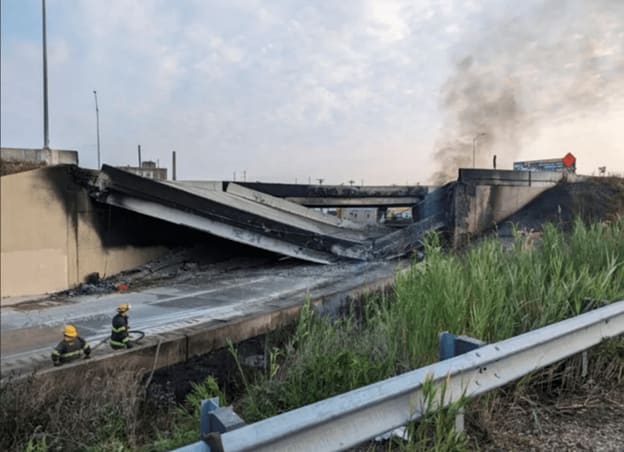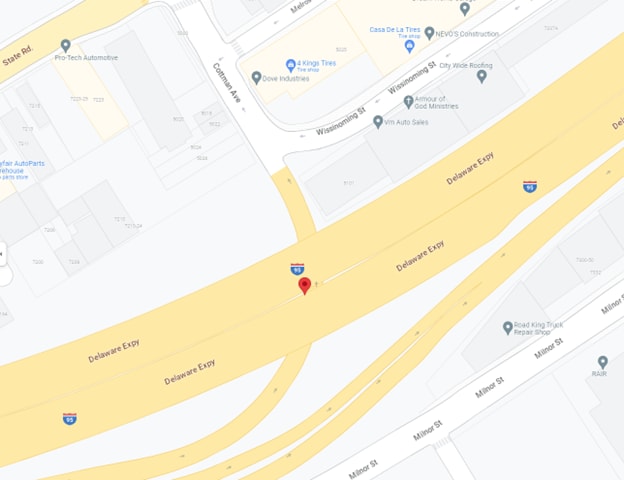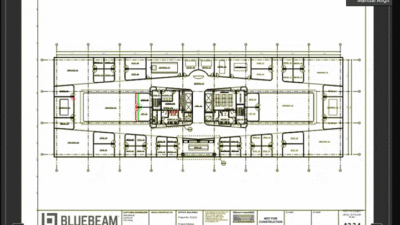Fire underneath brings down an overpass again.

At 6:22 a.m. on Sunday, June 11, 2023, thick dark smoke was reported coming from both sides of Interstate 95 in Northeast Philadelphia. I-95 is the major North-South artery in the Eastern U.S, stretching from Maine to Miami and is used by 160,000 vehicles a day according to PennDOT. The source of the fire was a tanker truck with 8,500 gallons of 87 octane fuel, according to fire and city officials as reported by Sharie William, news anchor at the local ABC station. Minutes later, fire crews were on the scene, requesting a hazmat unit. A complete shutdown (in both directions) of I-95 was requested at 6:29 a.m. By it was too late. The intense heat of the fire had made the steel beams give way to the weight of the overpass and caused a dip in the road surface. A video posted on Twitter shows the smoke was mistaken for a brush fire, an emergency vehicle ahead with lights flashing and traffic proceeding in both directions just minutes before the overpass collapsed.

The collapse was to occur at 6:47 a.m., only 25 minutes after the fire was initially reported. The overpass cracked not in the middle but more to the right of traffic exiting I-95. The exit ramp curves as it goes under I-95 to enter Cottman Avenue, leading to speculation that the tanker truck might not have been able to make the turn, its full load making it top heavy, or a partial load sloshing to one side as the driver tried to reduce speed coming off the highway but was unsuccessful and crashed into the concrete North wall of the underpass.
The traffic on this sunny Sunday morning was light. In the video, there is no sign of vehicles on the onramp to Cottman Avenue, including the fuel truck, which may be completely covered by remnants of the overpass.
That section of I-95, part of the Delaware Expressway, has four lanes in either direction. Traffic was stopped on exits to the North and South of the collapse, so it is unlikely that vehicles would have been moving under the overpass when it collapsed. There were no reports of injuries or fatalities at the time of this writing.

I-95 is the only North-South freeway through the city of Philadelphia. Some commuters will, no doubt will switch to regional rail service run by Southeastern Pennsylvania Transportation Authority (SEPTA). They can expect the Market-Frankford line to be quite crowded. But commercial vehicles are left with no viable alternative.
The fuel from the tanker may have set off smaller fires. Manhole covers were reported blowing off with fires sprouting from the manholes (possibly fuel or gas lines), according to witnesses.
A Little History
A section of I-95 was damaged in 1996 when seven teenagers set fire to a pile of tires under an overpass, causing $6.5 million dollars in repairs that shut down the freeway for several weeks.
In 2017, a homeless person started a fire that spread to combustible construction materials stored by the Georgia Department of Transportation under an overpass on I-85 in Atlanta.
In an eerily familiar incident, a tanker truck carrying 8,600 gallons of unleaded gasoline crashed into concrete pylons in the MacArthur Maze, a freeway exchange in Oakland, Calif., and the heat from the fire brought down a 168 foot section of the connector ramp above it. The crash occurred at 3:42 a.m. and no deaths or injuries resulted.
A 76 foot by 50 foot section of the San Francisco-Oakland Bay Bridge fell from the upper deck to the lower deck during the Loma Prieta earthquake in 1989.
Why Do Overpasses Fail So Often?
The main reason that overpasses collapse appears to be fire. Yet, engineers still don’t take fire into account when designing overpasses. Worst-case scenarios, which engineers by education and training are expected to consider, don’t include the sustained high heat that can result from some materials such as fuel oil (including gasoline), lithium (as in the Li-ion batteries in EVs), ruptured gas mains or garbage dumps full of tires.
Look up the next time you are under an overpass and you will very likely see exposed steel beams. These beams support the full load of the overpass, most of which is the weight of the overpass itself and the vehicles on it. Steel works well in a support role almost all the time – but fire is its Achilles’ heel. Steel retains its strength up to 600°F but the strength is reduced by half at 1100°F. Steel starts to melt at about 2700°F, though to be conservative, the American Institute of Steel Construction (ASCE) suggests designing for full loss of strength at 2200°F.
But even below temperatures at which steel softens, fire can warp and twist structural steel members. Although a warped or twisted structure may retain its material properties, its geometry may have compromised its function. Steel heated long enough may have undergone grain coarsening or by cooling too rapidly (as with fire extinguishing with water) that its distortion gets locked in. Quenched and tempered structural steels and high-strength fasteners can be weakened at temperatures far below the melting point and should be inspected and/or tested after a fire.
Enclosing steel in concrete, as is done in “fireproof” safes, is one way to protect steel beams from failure, because the concrete, with its thermal mass, acts like an insulator and slows down the temperature increase in the steel – giving vital response time to firefighters. However, encasing steel in concrete is no panacea. Covering steel with concrete adds weight, cost and time to the project as well as puts more mass above that could fall down for reasons other than fire (earthquake, for example). Covering steel with concrete can introduce and hide structurally damaging corrosion. The Morandi Bridge in Genoa, Italy, was found to have deep corrosion in its steel cables that went undetected because bridge designers had created a bridge where concrete covered the cables.



